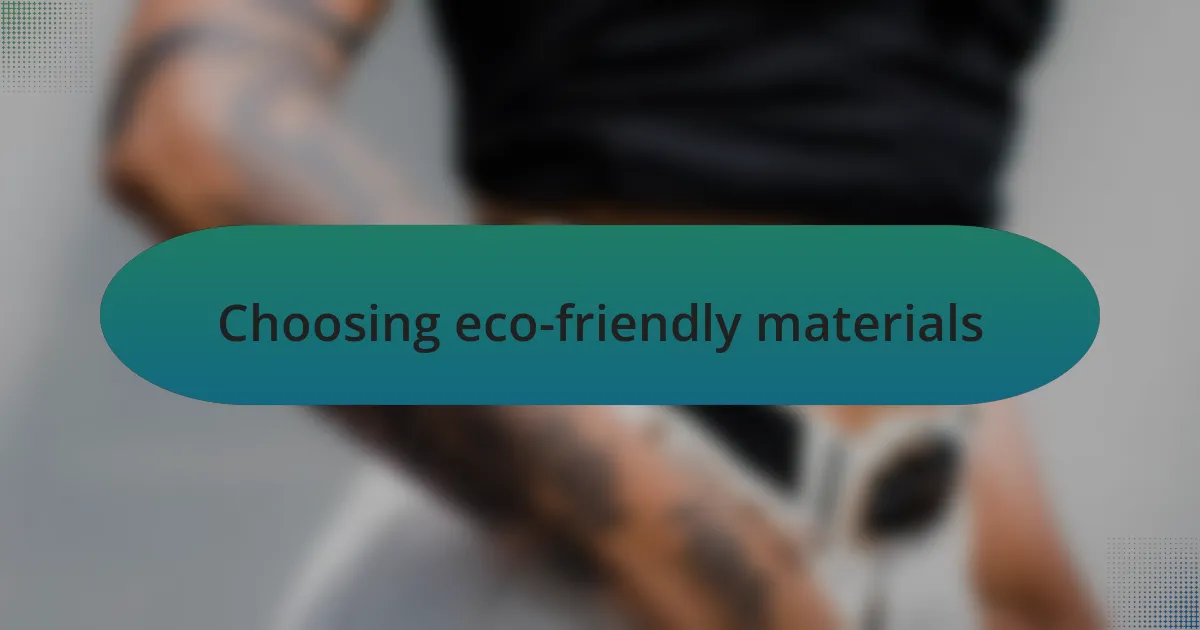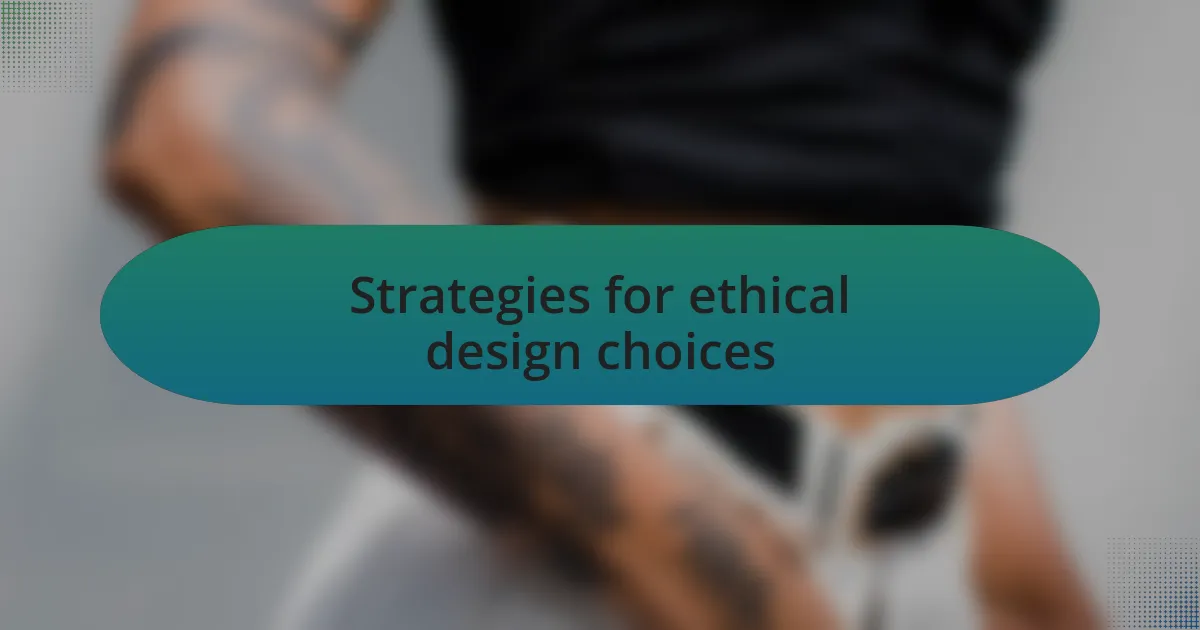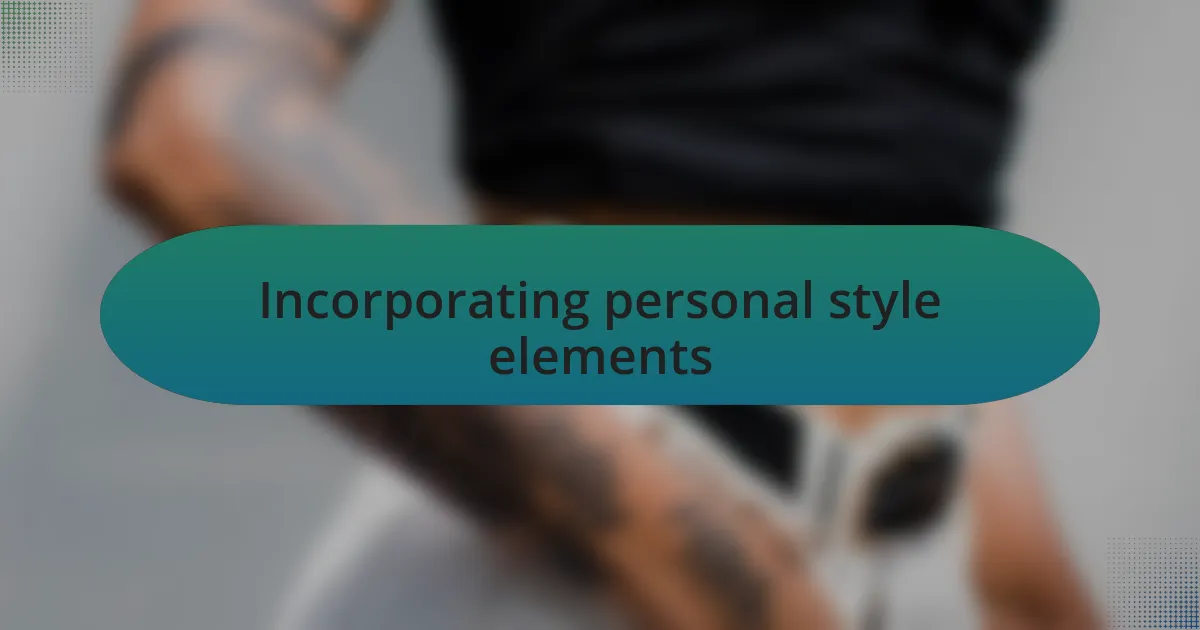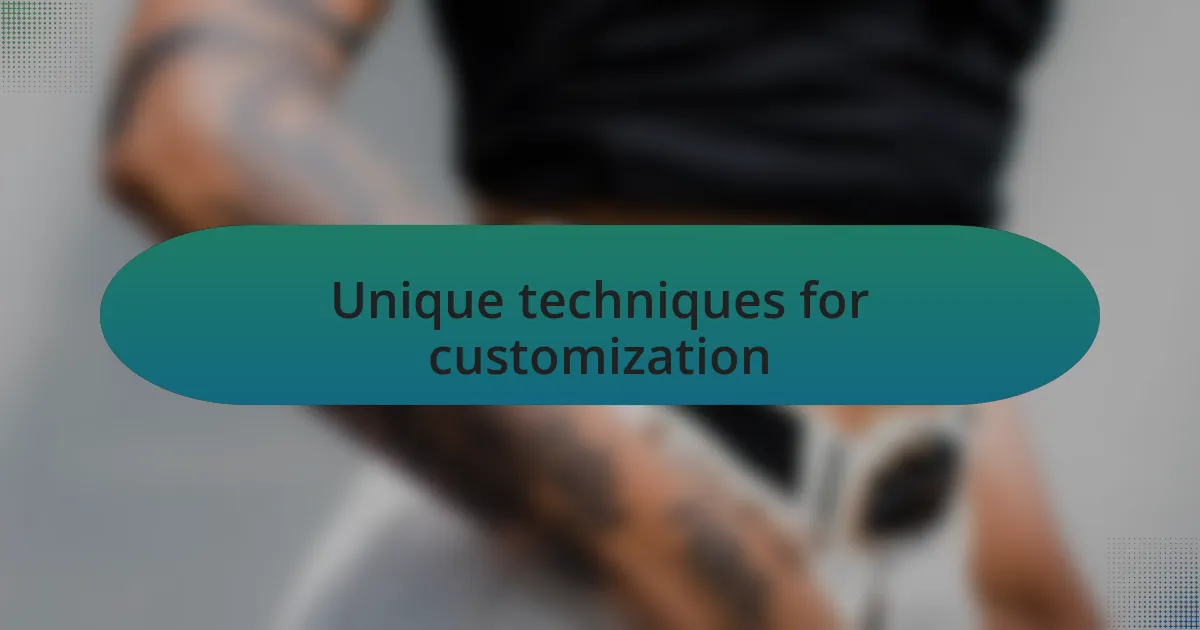Key takeaways:
- Sustainable fashion prioritizes eco-friendly materials, ethical production, and personal investment in clothing choices.
- Incorporating eco-friendly and ethical practices transforms shopping into a meaningful journey that reflects commitment to sustainability.
- Customization techniques, such as upcycling and DIY modifications, encourage creativity while reinforcing sustainable practices.

Understanding sustainable fashion principles
Sustainable fashion is built on key principles that prioritize environmental health, social equity, and economic viability. When I first learned about the staggering amount of waste generated by the fashion industry, it struck a chord with me. I couldn’t help but reflect on my own shopping habits—how often did I buy items that I would only wear once? This realization motivated me to consider the impact of my choices.
One fundamental principle is the use of eco-friendly materials, such as organic cotton or recycled fibers. I remember the joy of discovering a local brand that sources its fabrics sustainably. It felt empowering to wear clothing that not only looked good but also contributed positively to the planet. Have you ever felt a connection with a piece of clothing because of its story? That’s the magic of sustainable fashion—it adds meaningful context to what we wear.
Additionally, sustainable fashion emphasizes ethical production practices. I’ve visited factories where artisans create clothing under fair labor conditions, and the profound respect for their craft was palpable. This experience made me question the origins of the pieces I previously bought. How does knowing the story of the makers change how you feel about a garment? For me, it transformed shopping from a casual activity into a thoughtful journey, where every purchase became an investment in a better future.

Choosing eco-friendly materials
Choosing eco-friendly materials can feel like a game-changer in my wardrobe. I remember the first time I held a shirt made from Tencel, a fabric derived from sustainably sourced wood pulp. It was incredibly soft and breathable, and I couldn’t help but feel proud knowing that my choice supported responsible forestry practices. Have you ever touched a fabric and immediately felt a connection to its origin? That tactile experience can truly deepen our appreciation for what we wear.
The variety of eco-friendly materials available today often surprises me. Beyond just organic cotton, I’ve experimented with hemp and bamboo. Each time, I found myself more curious about their properties—bamboo is naturally breathable and moisture-wicking, which is perfect for those hot summer days. It’s fascinating how these materials can serve practical purposes while also being kinder to the environment. Have you thought about the benefits of wearing clothing made from such innovative fabrics?
Incorporating these eco-friendly choices into my style journey hasn’t always been easy. I faced challenges in finding brands that aligned with my values, but the search was worth it. Every sustainable piece I’ve added has transformed my closet into a collection of stories. It’s rewarding to know that my outfit choices reflect not just my personal style, but also my commitment to the planet. Don’t you feel more empowered when you wear something that truly matters?

Strategies for ethical design choices
Selecting ethical design choices goes beyond fabric; it also encompasses the processes behind creating garments. I vividly remember visiting a small, local workshop where artisans handcrafted each piece. Watching the attention to detail and time invested made me appreciate not only the final product but also the story behind it. Have you ever considered how much effort goes into the creation of the clothes we wear?
Another strategy I’ve implemented is to prioritize brands that are transparent about their supply chains. I recall a moment when I discovered a fashion label that openly shared its sourcing and production practices. It felt like a breath of fresh air, knowing that my purchases supported workers treated fairly and the environment respected. Do you ever think about the impact of your shopping habits on people’s lives?
Lastly, I’ve found that embracing a minimalist approach to my wardrobe can amplify the impact of my ethical choices. This mindset shifted my focus from quantity to quality, and I now invest in timeless pieces that I cherish. The experience of curating a smaller, thoughtfully chosen collection is surprisingly liberating. Have you tried simplifying your closet to truly appreciate what you own?

Incorporating personal style elements
In building my sustainable style, I realized how essential it is to incorporate elements that reflect my personality. One day, while sorting through my wardrobe, I stumbled upon a vintage scarf that belonged to my grandmother. That moment sparked a desire to fuse personal history with sustainable fashion, reminding me that style can be both expressive and eco-conscious. Have you ever found a piece that tells a story?
I also took a moment to redefine my color palette. Early on, I was drawn to bold and bright hues, but as I delved deeper into sustainable choices, I began to appreciate the soothing shades of earth tones. This shift not only complemented my skin tone but also aligned with my commitment to sustainability. Could a subtle change in color transform your wardrobe, too?
Lastly, I regularly find myself chopping and reimagining old clothes to create unique pieces that embody my style. I recall a simple t-shirt that ultimately became a trendy shoulder bag after a little DIY magic. It was rewarding to wear something that was entirely my creation while supporting my journey towards sustainability. Have you ever transformed something old into a new treasure?

Unique techniques for customization
One of my favorite techniques for customization is using fabric paint to add personal designs to basic items. I remember one evening, armed with a few brushes and a palette of colors, I transformed an ordinary plain canvas tote into a vibrant piece adorned with my favorite quotes and abstract patterns. It felt empowering to see something so simple evolve into a unique reflection of my creativity. Have you ever considered how a splash of color could redefine your accessories?
Another approach I’ve enjoyed is upcycling old jewelry. I recently had a collection of mismatched earrings that weren’t seeing the light of day. Instead of letting them sit in a drawer collecting dust, I combined them into a layered necklace that turned heads wherever I went. This technique not only gave new life to forgotten pieces but also allowed me to wear my story, sparking conversations about sustainability. Isn’t it fascinating how a few old treasures can morph into something strikingly beautiful?
Lastly, I often search for second-hand pieces with intriguing cuts or details and customize them to match my vision. There was a dress I found at a thrift store that had potential but didn’t fit quite right. With a bit of tailoring and some added embroidery along the hem, it turned into a beloved staple in my wardrobe. This process of transforming and enhancing thrifted items fuels my passion for fashion while keeping my commitment to sustainable practices alive. Can you think of a second-hand item that could be transformed with a little creativity?